Nordic Gold
Information About Nordic Gold
Nordic gold is a base metal alloy used in 10, 20, and 50 euro cents, Swedish 10 kronors. It contains no gold, being composed of copper, aluminium, zinc, and tin.
Its composition is 89% copper, 5% aluminium, 5% zinc, and 1% tin.
It has been used as an alloy for the production of coins for some time.
It was originally developed for the Swedish Mint, who used it for the new base metal 10 kronor introduced in 1991. It is a source of possible confusion that previous Swedish ten kronor coins from 1873 to 1901 were made of real gold.
Since then, it has been used for a growing number of coin denominations worldwide, including the eurozone's 10 cent, 20 cent, and 50 cent coins.
As it is very likely that Nordic Gold is now produced outside Scandinavia, it may no longer even be Nordic!
Reason for Development
One of the reasons for its development and selection was its low allergenic properties. It contains no nickel, which has been a common constituent of coin alloys. The US 5 cent coin has been made using a nickel alloy since 1866. Nickel has many useful and desirable properties for use in coins, but its main negative property is that it is a known common allergen, i.e. it caused allergic reactions in many people. Obviously it is undesirable for coins to cause allergic reactions, bearing in mind that coins are handled by most people in everyday transactions. In litigious societies, it would not be surprising for individuals or groups to mount legal action against governments which continue to use nickel in coins.
Wikipedia
Interestingly, the Wikipedia page about nordic gold included the statement "this is unlikely to lead to many misleading trade descriptions since its colour and weight are quite unlike real gold."
We have added the following paragraph to the Wikipedia page:-
As a professional numismatist (coin dealer) with over 40 years experience, I believe that the name "nordic gold" is very likely to lead to many misleading trade descriptions. Its colour is similar to that of gold, and is probably at least an indirect contributory factor in its choice. Granted when compared with most gold coins, it is fairly easy to tell it apart, but there are many different gold alloys, and gold alloys can be produced in an almost infinite range of colours. Nordic gold coins could also be gold plated which would give them a visual appearance identical to gold. In this case, it would be necessary to compare weights or densities, something which many consumers would not think of doing before purchase, and arguably requires at least some degree of knowledge and expertise. Dishonest dealers and individuals will use any advantage, loophole, or other opportunity unfairly. Even a cursory look at internet auction sites such as eBay will quickly reveal many coins described and sold as "gold", which are clearly not gold, sometimes gold-plated, sometimes made of nordic gold. In some listings there is a note in the description that the coin is gold plated, but often any such clarification is omitted. It is our firm opinion that any such "trade description" should contain a clear indication in the item title, and also in the description, that the item is not real gold. Failure to state this clearly could be due to ignorance or inexperience, but in most cases appears to be deliberately intended to mislead, i.e. it is made with fraudulent intent.
Legal Loophole
Anybody accused of misleadingly or fraudulently describing an item as "nordic gold" without any clear statement or indication that the item was not real gold, or that nordic gold contains no gold, could use the argument that they have simply used the accepted and correct name of the alloy. We do not believe this defence should be permitted to automatically succeed. If the item title majors on the term "nordic gold", rather than for example "Swedish 10 Kronor", then the title should be considered to be intended to mislead, at least in the absence of a clear and unequivocal statement about the true nature of the item and its metal content, specifically the nordic gold is not real gold, and contains no gold.
Hustlers
We were actually pleasantly surprised by how few people appear to be trying to mislead people by selling nordic gold as real gold. A recent search on eBay found only a handful of vendors offering items described as nordic gold, without a suitable description.
On a visit to San Marino a few years ago, I can remember being accosted by an extremely attractive Italian (I should say San Marinese) young woman, who was trying to sell me a mint pack of San Marino euro coins as gold, and showing me the pack description where it specified them as nordic gold. She was also asking about 2 to 3 times the price we would have been asking for them.
Fool's Gold
Nordic Gold could be considered to be a new version of Fool's Gold.
|
|
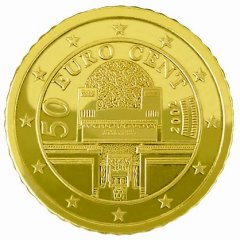
2002 Austrian Euro 50 Cent in Nordic Gold
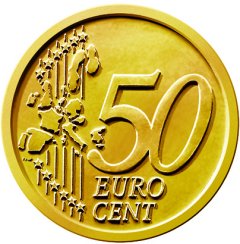
Common Reverse of 2002 Euro 50 Cent in Nordic Gold
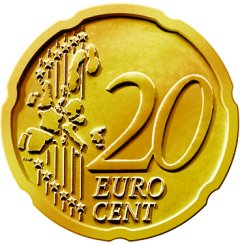
Common Reverse of 2002 Euro 20 Cent in Nordic Gold
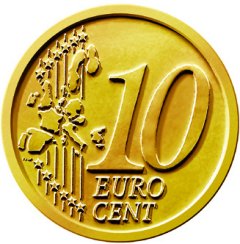
Common Reverse of 2002 Euro 10 Cent in Nordic Gold
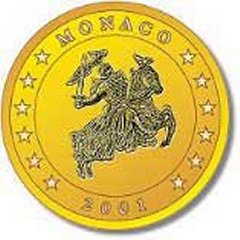
2001 Monaco Euro 50 Cent in Nordic Gold
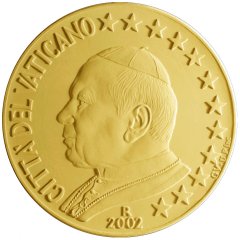
2002 Vatican Euro 50 Cent in Nordic Gold
|






